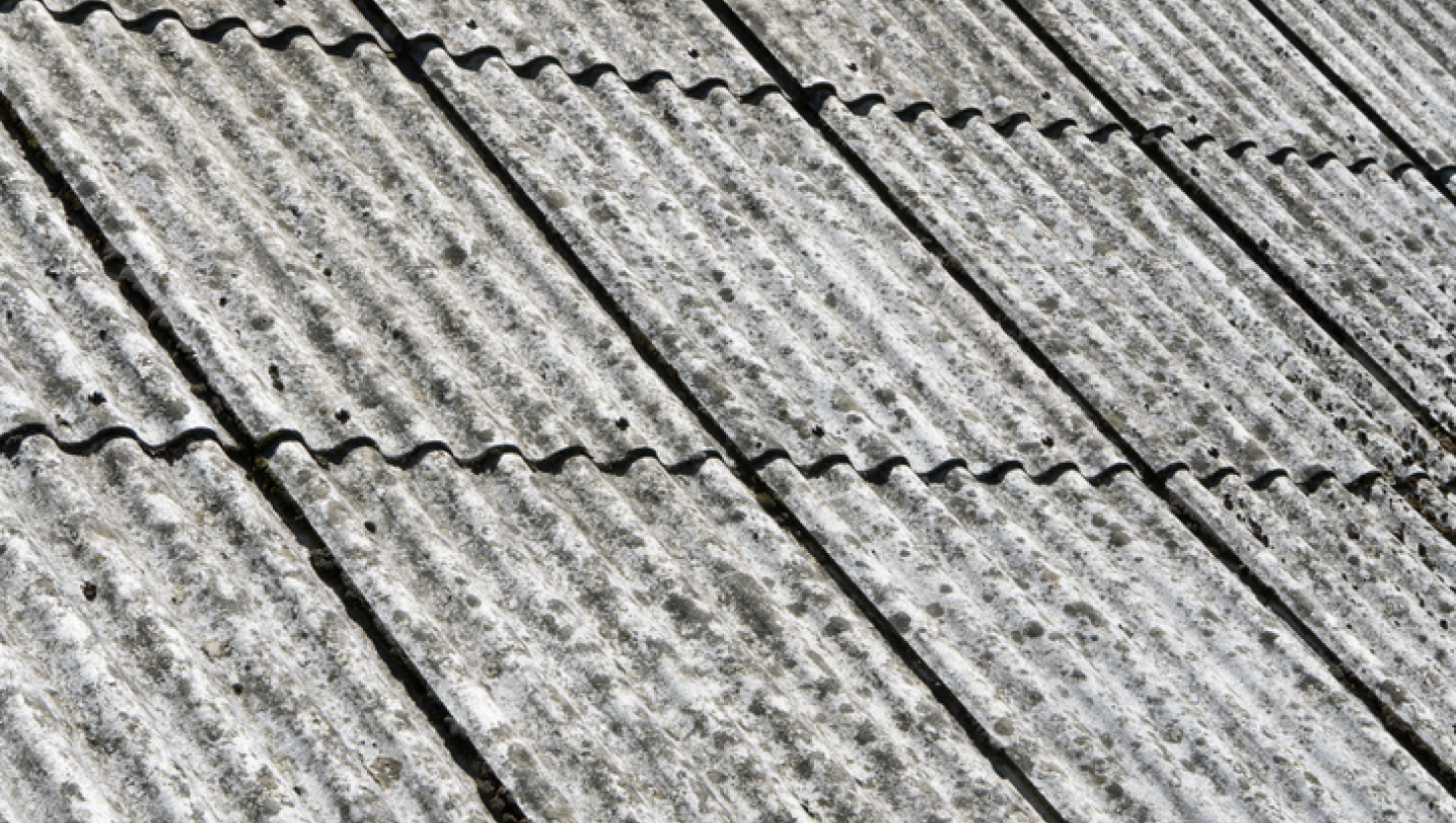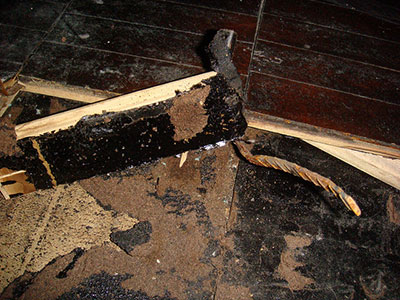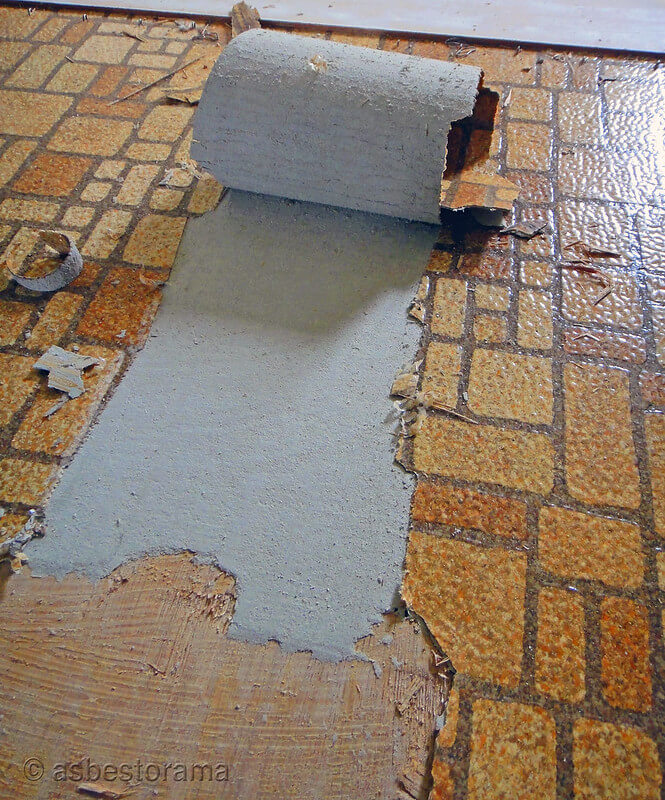Get Your Free Mesothelioma Guide

Find a Top Mesothelioma Doctor

Access Help Paying for Treatment

Builders commonly used asbestos felt as a floor backing and roofing material during much of the 20th century. Many tradesmen suffered high levels of toxic exposure when working with asbestos felt in the past, because it can lead to serious long-term health issues when it is uncovered in old buildings.

Because of the naturally soft, fibrous consistency of asbestos, the fireproof mineral was also made into felt for construction and manufacturing purposes until its toxicity was revealed to the public. Felt is a type of fabric made when textile fibers are compressed and heated or moistened so that they mat together. Felt was commonly made of animal hair or synthetic fibers.

Asbestos felt was used as an underlayment for floors and roofs. Paper mills also used sheets of it on which to dry hot paper pulp. The asbestos content of these products was historically 85%. Almost all manufacturers used the common chrysotile form, also known as “white asbestos.” Asbestos felt and paper easily releases toxic fibers into the air when worked with or disturbed. It poses a major exposure risk.
Asbestos flooring felt is one of the few asbestos products completely banned in the United States. Old asbestos felt remains on the floors and roofs of millions of American buildings constructed between 1900 and the 1990s. Roofers, flooring installers, demolition workers and paper mill workers were exposed.
Exposure to asbestos-contaminated felt may cause the following diseases:
In 2007, an asbestos exposure study was published in the Annals of Work Exposures and Health. It simulated work roofers performed using asbestos-containing roofing materials, including felt. Chrysotile asbestos fibers were detected in 28 of 84 air samples taken during the study.
Thankfully, it is unlikely that current roofers are exposed to dangerous levels of asbestos over an eight-hour work shift. Unfortunately, former roofers were exposed to dangerous levels of asbestos. They have developed related diseases as a result.
Get Your Free Mesothelioma Guide

Find a Top Mesothelioma Doctor

Access Help Paying for Treatment

Roofers, flooring installers and paper mill workers inhaled asbestos working with asbestos felt. Even when the product was new and in good condition it could release asbestos fibers during handling.
In decades past, asbestos felt products contributed substantially to occupational exposure. Occupations at risk of exposure to asbestos felt and paper include:
If you were exposed in the past, watch for symptoms such as difficulty breathing, chest pain, abdominal swelling and fatigue. Workers diagnosed with related diseases should see a doctor to ensure they receive the best treatment possible.
It is important to hire a licensed asbestos abatement professional if you believe asbestos felt is in your home or workplace.
The construction industry primarily used asbestos felt to produce roofing and flooring products. It was also used to make paper.
The primary applications for asbestos felt included:
Installing, repairing and removing asbestos felt and paper products released asbestos fibers into the air. These fibers are easily inhaled, but the body struggles to remove them all. The fibers accumulate in the body over time with repeated exposure. Over decades these fibers cause damage and inflammation that leads to cancer.
Companies that manufactured asbestos felt include:
| Manufacturer | Brand |
|---|---|
| Armstrong World Industries | Hydrocord Flooring Felt |
| Koppers Company | Fashionflor Cushioned Vinyl |
| Johns Manville | Blue Chip Roofing Felt |
| Celotex Corporation | Carey Fiberock Felt |
| Raymark Industries | Raybestos Pyrotex Felt |
| Quigley Company | Fiberock Felt |
| Reynolds Metals | AAA Roofing Felt |
| National Gypsum | FlexFelt |
Other companies that manufactured asbestos felt products include:
Several of these companies were forced into bankruptcy because of asbestos lawsuits. To reorganize through bankruptcy, they had to create trust funds to compensate asbestos victims.
Workers have filed lawsuits against manufacturers of asbestos products. These people were diagnosed with diseases like mesothelioma and lung cancer. This sent many companies into bankruptcy.
Another major manufacturer of asbestos flooring products, Armstrong World Industries, was driven to bankruptcy in 2000 by the volume of lawsuits filed against it. As part of its reorganization, it established the Armstrong World Industries Asbestos Trust in 2006 to provide asbestos compensation to present and future claimants. According to the trust’s 2014 annual report, it paid almost $100 million in claims that year and its total value was about $1.8 billion.
In addition to lawsuits and trust fund claims, other forms of compensation include VA claims, Social Security Disability and grants for treatment or travel. An experienced mesothelioma attorney can offer the best guidance on the types of compensation for which you may qualify.

We have more than 50 years of combined experience helping mesothelioma patients.
Chat NowIf roofing or flooring installed before 1980 must be repaired or replaced, a sample of the underlayment should be tested for asbestos before the work gets underway. Consult a trained asbestos abatement professional before doing any work that may disturb an asbestos felt product.

Asbestos felt is friable, making it a particularly hazardous product no matter the percentage of asbestos content. Most asbestos felt in homes and businesses today is encapsulated under floor tiles and roof shingles. The safest thing to do in many cases is to leave it that way so asbestos fibers remain trapped.
In the early 1900s, a new construction method called built-up roofing became popular. During this process, several layers of fabric covered with tar or asphalt were laid down on top of one another. Asbestos felt became the primary material used in many flat-topped buildings.
Materials used in flooring installation also incorporated asbestos felt. Linoleum, asphalt and vinyl floor tiles all offered cheap and durable flooring solutions, and asbestos felt products were available as backing materials for all of them.
The rise of the office worker brought with it the advent of the modern paper industry, which found yet another application for asbestos felt. After trees are processed into wood pulp, the pulp must be dried before being made into paper. Laying the pulp out on sheets of asbestos felt allowed it to be dried at a high temperature, increasing the speed of production.
By the 1980s, however, corporations could no longer cover up the link between asbestos exposure and fatal diseases such as asbestosis and mesothelioma. As with most asbestos products, the use of asbestos felt has largely been phased out in the United States, though it remains a threat to workers and homeowners renovating old floors and roofs.
Recommended ReadingYour web browser is no longer supported by Microsoft. Update your browser for more security, speed and compatibility.
If you are looking for mesothelioma support, please contact our Patient Advocates at (855) 404-4592
The Mesothelioma Center at Asbestos.com has provided patients and their loved ones the most updated and reliable information on mesothelioma and asbestos exposure since 2006.
Our team of Patient Advocates includes a medical doctor, a registered nurse, health services administrators, veterans, VA-accredited Claims Agents, an oncology patient navigator and hospice care expert. Their combined expertise means we help any mesothelioma patient or loved one through every step of their cancer journey.
More than 30 contributors, including mesothelioma doctors, survivors, health care professionals and other experts, have peer-reviewed our website and written unique research-driven articles to ensure you get the highest-quality medical and health information.
My family has only the highest compliment for the assistance and support that we received from The Mesothelioma Center. This is a staff of compassionate and knowledgeable individuals who respect what your family is experiencing and who go the extra mile to make an unfortunate diagnosis less stressful. Information and assistance were provided by The Mesothelioma Center at no cost to our family.LashawnMesothelioma patient’s daughter


Whitmer, M. (2025, January 14). Asbestos Felt and Paper. Asbestos.com. Retrieved July 14, 2025, from https://www.asbestos.com/products/asbestos-felt-roofing-flooring/
Whitmer, Michelle. "Asbestos Felt and Paper." Asbestos.com, 14 Jan 2025, https://www.asbestos.com/products/asbestos-felt-roofing-flooring/.
Whitmer, Michelle. "Asbestos Felt and Paper." Asbestos.com. Last modified January 14, 2025. https://www.asbestos.com/products/asbestos-felt-roofing-flooring/.
An occupational scientist or another expert who specializes in occupational hazards reviewed the content on this page to ensure it meets current scientific standards and accuracy.
Sean Fitzgerald, PG, is a research geologist specializing in asbestos environmental studies.
Our fact-checking process begins with a thorough review of all sources to ensure they are high quality. Then we cross-check the facts with original medical or scientific reports published by those sources, or we validate the facts with reputable news organizations, medical and scientific experts and other health experts. Each page includes all sources for full transparency.
Please read our editorial guidelines to learn more about our content creation and review process.
